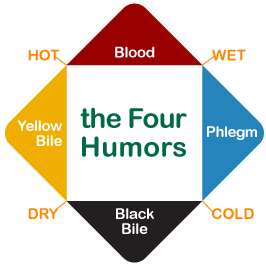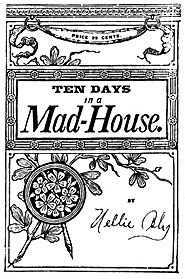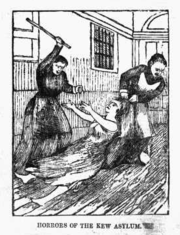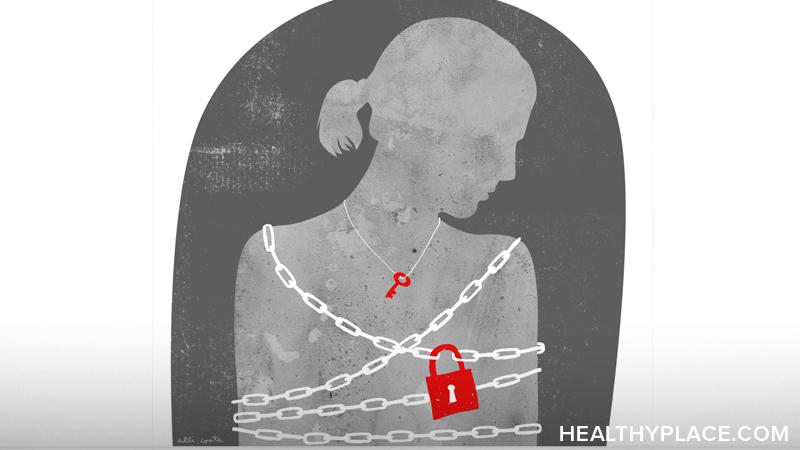Welcome students, educators, parents, et al! Here you will find a brief lesson in the history of how the world viewed mental illnesses throughout time! Why should you be reading and knowing all of this? Well, the best way to know where you're going is by knowing where you've been - so let's get going!
With everything in regard to mental illness and stigmas over history it really begs the question:
Have the past ways of viewing mental health illnesses and their treatments created the stigmas around mental health illnesses we have today?
Over the course of history, there have been three general viewpoints in how the population viewed mental illnesses and the way they treated them: Supernatural, Somatogenic, and Psychogenic.
A person with a Supernatural viewpoint is one who believes that mental illnesses are caused by things that cannot be explained by nature or science.
A person with a Somatogenic viewpoint is one who believes that mental illnesses are caused by imbalances in the body.
Lastly, a person with a Psychogenic viewpoint is one who believes mental illnesses are caused by imbalances in the brain as opposed to the body.
Beginning in the Prehistoric Era, there obviously wasn't that much information regarding mental illnesses and science. It is because of this that the world held a supernatural point of view.
There were several treatments during this time to help cure the patient but the most popular technique was trephination, where in order to release the evil spirit or demon, someone would drill a hole into the patient's skull in a circle.
Moving forward to approximately 400 B.C., a time and place where the Somatogenic view was going to take over.
It was during this time that the Greek philosopher Hippocrates wanted to discredit the Supernatural point of view.
His theory called into action the popular belief at the time in Ancient Greece and Rome that the body was made up of four "humors": blood, black bile, yellow bile, and phlegm.
He theorized that mental illness was caused by a balance in the four humors.
Again moving forward to the middle ages, specifically in Europe, we see the return of the supernatural point of view.
Due to the political and economic turmoil threatening the Roman Catholic Church, there was a needed to regain power and influence. The supernatural point of view was also fueled by the natural disasters that occurred such as the plague and famines.
The popular treatment for the mentally ill was an actual treatment at all. Due to the belief that mental illness was caused by evil spirits or demons, the mentally ill, especially women, were accused of being witches under the influence of demons or evil spirits. This lead to the burning at the stake of over 100,000 people.
The final major switch in history was in the late 19th to 20th centuries right here in America. This era took on the psychogenic point of view, finally giving the idea that it was our brains causing the problems a foothold.
However, even though we knew that mental illness was caused by the brain, it didn't mean that the treatment for patients was going to be at its peak.
Before the 19th century, it was the role of the family to care for patients with mental illnesses, but then as the Industrial Age began, and the need for work and workers grew, families would ship off their ill family members to asylums, where the conditions weren't exactly accommodating.
In the 1887, Nellie Bly published a journal called Ten Days in a Mad-House detailing her experiences in Blackwell's Island Asylum in an exposé on how asylum inmates were treated.
“The insane asylum on Blackwell's Island is a human rat-trap. It is easy to get in, but once there it is impossible to get out.”
—Nellie Bly, Ten Days in a Mad-House, 1887
While the journal only describes a single asylum, it calls forth situations and experiences that parallel several others in asylums across the country.
Under the guise of patients getting "treatment", there was a lot that went unchecked or unnoticed. From horrific conditions, countless rat infestations, to inhumane treatments such as electro-convulsive shock therapy, to neglectful and abusive doctors and nurses, patients of asylums were treated like animals.
To hear more, there is an entire podcast series dedicated to the history of psychiatry, among them is a series called "Voices of the Mad" where they feature the words of asylum patients.
Even after asylums were closed and conditions got so much better, the world was still a very hard place for those who suffered from mental illness. For people like Tara Greyson, a resident of Gig Harbor, Washington, life was a struggle from several angles.
Growing up and going to college was incredibly hard, medications weren’t around so I had to figure it all out on my own, meanwhile dealing with the hardships of the people who didn’t understand and either didn’t help or tried to use my supposed weaknesses against me.
-Tara Greyson
Now that you've learned a brief history on mental illness and how the world viewed them, let's take a look at stigmas...
Today, there are two separate categories of stigma:
Social Stigma: This stigma includes the attitudes and discriminating behavior that is directed towards individuals from others. This can include prejudicial behavior, mistreatment and even violent actions. The trend of institutionalization, the keeping of mentally ill away from the public, is a result of social stigma.
Perceived or "Self" Stigma: When stigma comes from internal feelings by the individual it is considered perceived or self-stigma. Although both forms of stigma involve similar feelings, they may in reality be different. Someone with significant perceived stigma may actually not be subjected to social stigmas, despite their internal feelings.
So now that we've taken a short trip through thousands of years and learned about how the world and mental illness mixed, it's time for you to decide: Has the world's stigmas against mental health still hold a lot of sway today? You decide...







Leave a comment
You must be logged in to post a comment.